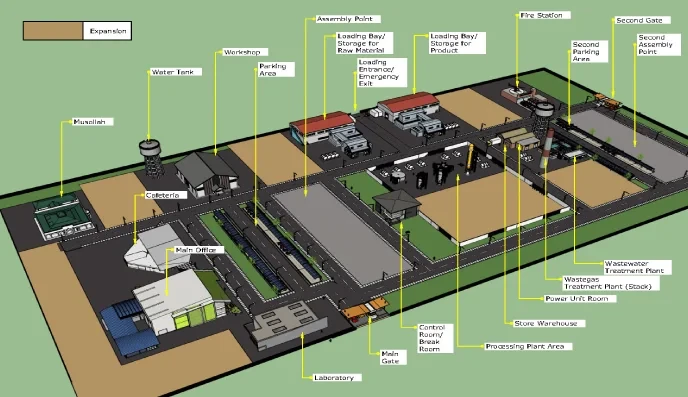I was pretty let down by my final year research project. I was supposed to do lab work, but then COVID arrived. By that time, I had no choice but to redo and was advised by my superior to do a critique review instead.
It was pretty much a last-minute effort to pass the grade rather than a meaningful research project. So I focused on design project instead, and our title was Production of 50MT/year of n-propanol, which I believe a generic FYP for chemical engineering student.
Plant layout animation using SketchUp

My team member and I divided the topics for each of us to focus on, and plant layout was one of mine. We were given the task by our supervisor to create not only an isometric layout but also a 3D layout. Due to complications from COVID, we had a very short time to prepare for the presentation.
After hours of researching what software was best for creating an isometric/3D layout, I decided to use SketchUp, as it has a large free asset library and features for animation. The laptop I used to run SketchUp barely met the system requirements (the rendering process was a nightmare).
Given the short deadline and the need to learn SketchUp on the spot, the final result turned out quite well.
We won Best 3D Plant Layout, but it was a bit anti-climactic because the only proof we received was a WhatsApp message from the lecturers who coordinated the FYP, and no certificate whatsoever...
Process simulation using Aspen HYSYS
Process simulation is a bit different. I am 70% convinced that most of the lecturers do not fully understand how to use Aspen HYSYS, but expected students to master it like how you master Excel (just my two cents, no offense).
This topic however, involved all team members, as we had little idea how to make it work.
Unlike SketchUp, which is widely used and has plenty of tutorials on the internet, HYSYS has little to none (students nowadays have no idea how lucky they are with AI).
You can see two sections on the PDF. The diagram section shows our unit operations, and the bottom part is a table that consists of data we input (blue-colored) and data calculated by HYSYS (black-colored). We then compared the mass and heat energy (mass flow and heat flow in the table) at the input and output of each unit operation, as calculated by HYSYS, with our manual calculations, and making sure that input = output.
So, in summary, process simulation is essential to process design, but it should not be used as the main reference (no wonder the lecturers don’t bother to master HYSYS). Instead, the manual calculation of material and energy balances is what’s important; the simulation results from HYSYS are only used to validate our manual calculations.